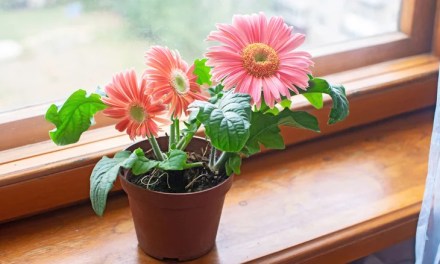Sacred trees and plants in Hinduism
Sacred trees and plants in Hinduism
Our ancient scriptures mention the Kalpavriksha and the Chaityavriksha as a deity, which indicates that worshipping trees is indeed an ancient Indian practice. The Ancient Aryans worshiped nature. Plants, trees and the other elements were always revered and several rituals were connected to them.
Sacred trees and plants in Hinduism
Tree worship continues to be an element of modern Indian traditions. There are many trees which are considered Sacred. Let’s take a look at some of the sacred trees…
Ashoka Tree
Ashoka is one of the most legendary and sacred trees of India, and one of the most fascinating flowers in the Indian range of flower essences. It belongs to Caesalpaeniaceae family. It is a very handsome, small, erect evergreen tree, with deep green foliage and very fragrant, bright orange-yellow flowers, which later turn red. The flowering season is around April and May. It is found in central and eastern Himalayas as well as on the west coast of Bombay.
Ashoka Tree
Ashoka is a Sanskrit word meaning without grief or that which gives no grief. The tree has many other names in local languages as well. One such name means the tree of love blossoms. The Hindus regard it as sacred, being dedicated to Kama Deva, God of Love. The tree is a symbol of love. Its beautiful, delicately perfumed flowers are used in temple decoration. Lord Buddha was born under the Ashoka tree, so it is planted in Buddhist monasteries.
Peepal Tree
Peepal Tree also known as “Ashvattha” in Sanskrit is a very large tree and the first-known depicted tree in India. A seal discovered at Mohenjodaro, one of the cities of the Indus Valley Civilisation depicts the peepal being worshiped. According to the Brahma Purana and the Padma Purana, when the demons defeated the gods, Lord Vishnu hid himself in the Peepal Tree and that is why it is believed that Peepal Tree is a symbol of Vishnu.
Peepal Tree
There is another belief that the tree represents the Trimurti – the roots being Brahma, the trunk Vishnu and the leaves Shiva. Some says that Lord Krishna is believed to have died under this tree, after which the present Kalyug started. According to another belief, Goddess Lakshmi also inhabited the tree, especially on Saturday and hence it is considered auspicious to worship it.
Peepal Tree
Infact women worship the tree to bless them with a son tying red thread or red cloth around its trunk or on its branches. According to the Skanda Purana, to cut down a peepal tree is considered a sin. Even Buddha is believed to have attained enlightenment under the peepal tree and the peepal is also sacred to Buddhist. Hence it is also called the Bodhi tree or “tree of enlightenment”.
Banyan Tree
Like Peepal Tree, the Banyan Tree also symbolizes the Trimurti-Lord Vishnu, Lord Shiva and Lord Brahma. The tree also symbolizes life and fertility in many Hindu cultures. That is the reason, banyan tree is worshipped by those who are childless and this tree should never be cut.
Banyan Tree
The tree can grow into a giant tree covering several hectares. The Great Banyan in the Indian Botanic Garden, Howrah, is considered to be the largest tree in the world. Lord Dakshinamurthy, who is worshiped as the “ultimate guru”, is usually depicted beneath a banyan tree. He symbolizes Lord Shiva and is seen as the the destroyer of ignorance and embodiment of knowledge.
Bael Tree
In India, Bael tree is considered to be very sacred because it is associated with Lord Shiva. It is said that Lord Shiva is pleased by offerings of leaves from the Bael Tree, also known as bilva or bel tree. Thus, the Brahmanas worshipped Lord Shiva for a period of one fortnight by offering bel leaves and that way satisfied Lord Shiva greatly. The fruit, flowers and leaves of the tree are all sacred to Shiva.
Bael Tree
The trifoliate leaf or tripatra of the bael tree is believed to symbolize the three functions of the Lord-the creation, preservation and destruction as well as his three eyes. The Beal tree is also sacred to the Jains. It is said the 23rd Tirthankara, Bhagwan Parasnathji attained “Nirvana” enlightenment under a Bael tree. Besides religious significance, almost all parts of the tree have medicinal qualities Bael is an ingredient in many Ayurvedic and Siddha formulations.
Bamboo Tree
The common names of Lord Krishna-Venugopal, Bansilal, Murali and Muralidhar reflect His association with Bansuri or Venu, His constant companion. Bansuri is actually a flute made of bamboo. That is the reason, bamboo is revered in India because it is associated with Lord Krishna.
Banana Tree
Though banana is not a tree but it is considered a tree because of its structure and size. It is a very sacred tree and all parts of the tree are used for some purpose or the other. For example, the trunk of banana is used to erect welcoming gates. The leaves are used to make the ceremonial pavilion. In some pooja, the leaves are used to serve “prashad”. It is believed that offering of the leaves of banana pleases Lord Ganesha. Banana as a fruit is offered to Lord Vishnu and Laksmi.
Banana Tree
Infact, the eleventh day of the bright half of Pausa (December-January) is considered to be very auspicious to offer banana to Lord Vishnu and Goddess Laxmi. In some regions, banana tree is worshipped while performing Kadali Vrata. According to tradition, during Vaisakha, Magha or Kartika sukla caturdasi, a banana tree is planted and nurtured till it bears fruit. It is said that worshipping the tree with flowers, fruit, etc. will help in the welfare of one’s family.
Lotus
The Lotus is always considered as an evocative symbol of beauty, purity and divinity and a highly revered flower by all Hindus. In Hinduism many of the deities are pictured sitting upon a lotus or holding a lotus flower. Rising up pure and unsullied from the depths of the muddy swamp, the lotus represents the manifestation of God. The pure white lotus flower is the only plant to fruit and flower simultaneously.
Lotus
The flower is a symbol of Goddess Laxmi. One of the incarnations of the Mother-Goddess or Devi and wife of the Hindu god Vishnu, Laxmi is the goddess of fortune and prosperity as well as the epitome of feminine beauty. Lakshmi is always portrayed as sitting on a lotus flower which is her traditional symbol. That is why this flower held in high esteem. The Lotus flower has also symbolized spiritual enlightenment.
Bhang Tree
There are many beliefs associated with the Bhang Tree. It is believed that a guardian lives in the Bhang leaf. To see in a dream the plant or water or leaves of Bhang is considered lucky as it brings wealth and prosperity into the dreamer’s power. To meet someone carrying Bhang is a sure sign of success. Bhang is a popular drink made of the leaves and flowers of the Bhang tree and considered to be a “prashad” on Mahashivratri.
Sandalwood Tree
Sandal wood, its paste and oil are important in worship of gods. The Sandal tree is highly regarded in the Vedic texts, and the heartwood is considered to be sacred. It is said that chandana scents the whole of paradise with its fragrance. Sandalwood is considered the epitome of excellence, imparting fragrance even to the axe that cuts it. It is used in sacred ceremonies and to purify holy places.
Tulsi
Tulsi is always associated with purity and a highly revered and used for all religious purposes among the Hindus. It is considered very auspicious to have a Tulsi plant in the front courtyard of a house. Tulsi beads can always be seen around the necks of serious yogis and mystics in India, worn to purifying the mind, emotions and body. Dispelling the unwanted influences of others, gross and subtle, is one of the many benefits bestowed by Tulsi plant and hence worshipped by all.
Tulsi
Tulsi plants are also prized in Ayurveda, where they are considered an integral part of that sophisticated healing system. In practically every temple in India, no puja can be started without few Tulsi leaves. The qualities and amazing powers of this plant are found throughout the oldest writings on Earth, the Sanskrit Vedas of ancient India, where it is stated that simply touching the wood is purifying at many levels.
Coconut Tree
In Sanskrit, the name for the coconut palm “Kalpa vriksha”, which means “the tree which provides all the necessities of life” or “wish-fulfilling tree”. The coconut tree is given a special place in most Hindu households and great care is taken to nature the tree. In the southern part of India, it is a must for every household to plant coconut trees. The coconut is used for all religious purposes.
Coconut Tree
The whole pot filled with water, mango leaves and coconut, also known as “Purnakumbha” is a symbol of Goddess Laksmi or Fortune and the coconut represents divine consciousness. To break a coconut in the beginning of any event is considered to be very auspicious. Coconuts are offered in Temples to worship to various Gods and Goddesses. The fruit is also believed to represent Lord Shiva and the three black marks on the coconut shell, symbolizes his eyes.
Neem Tree
The neem tree besides having various medicinal benefits is a highly revered tree among the Hindus because it is a manifestation of “Goddess Durga”. That is why the tree is sometimes referred to as Neemari Devi. The Tree is worshiped very intensely. Tamil Ladies, while worshiping Maa kali dress in red, carry branches of the Neem tree, and dance in public places swishing the branches as an act of exorcism and to purify the world.
Mango Tree
The mango tree is another sacred tree of the Hindus. The significance of this finds mention in the Ramayana, Mahabharata and the Puranas. The mango as a fruit is a symbol of love and fertility. The leaf of the tree is used during most religious and social ceremonies of the Hindus. On various auspicious occasions, mango leaves are used to adorn entrances at home to signify good fortune.

KENT Grand 8-Litres Wall-Mountable RO + UV/UF + TDS Controller (White) 15 ltr/hr Water Purifier
₹ 15,599.00
Red Sandalwood Tree
Besides being used in fragrance industry, fine woodworking and aromatherapy, Sandalwood is commonly used for incense and religious ceremonies. The Red Sandalwood Tree is considered to be a very sacred tree and is like a sage among many people. It is said that all other trees are considered ordinary trees and are like ignorant men in front of a Red Sandal wood.






